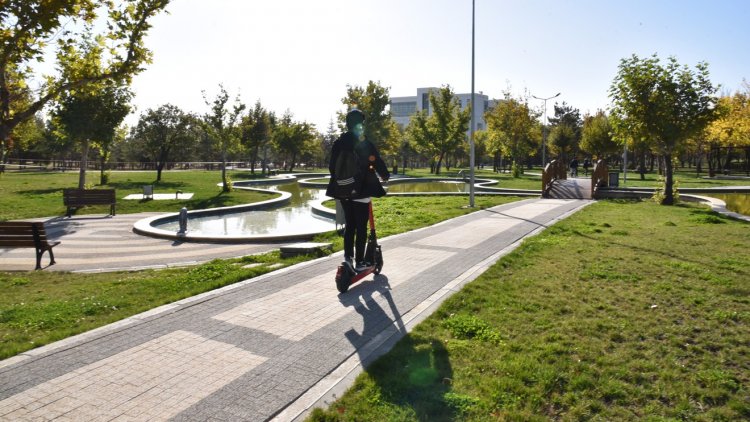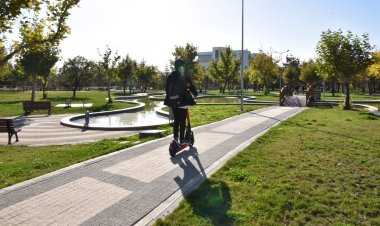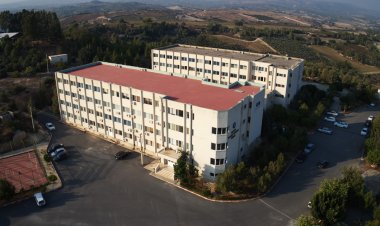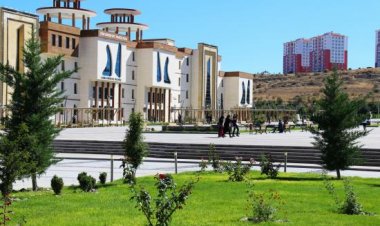Konya Bedesteni
Konya Bedesteni Baş, Ali; Bozkurt, Tolga Osmanlı kentinde ticari dokunun çekirdeğini teşkil eden bedesten, değerli malların alım - satım ve depolama işlevlerinin yürütüldüğü dışa kapalı, sağlam kâgir yapılardır. Gelişmiş iktisâdi hayata sahip her Osmanlı kentinde, çarşının merkezinde birer vakıf eseri olarak bedesten inşa ettirilmiştir. 13. yüzyıldan itibaren önemli bir Anadolu kenti olan Konya’da da, Kânuni devrinde müftü ve kadıasker olan Mevlâna Kadri Çelebi tarafından 1538’de, klasik tipte dokuz üniteli bir bedesten yaptırılmıştır. Ancak bazı araştırmacıların arşiv kayıtlarına istinaden belirttikleri gibi, önemli ticaret yollarının kavşağında yer alan ve ileri düzeyde bir sosyoekonomik yapıya sahip olan Konya’da daha erken tarihli bir bedesten binası bulunmalıdır. Yerine “Sanayi Mektebi” -bugünkü İl Özel İdare Binası- inşa edilmek üzere 1898 yılında yıktırılan Konya Bedesteni’nden günümüze, Konya Mevlâna Müzesi’nde sergilenen kitabesi ile, belge niteliği taşıyan birkaç fotoğrafı ulaşabilmiştir. Bu çalışmada; belge fotoğraflar, arşiv kayıtları ve diğer Osmanlı kentlerinde yer alan bezer dokuz üniteli örneklerden yola çıkılarak, Konya Bedesteni’nin mimari özellikleri tasvir edilmiş ve yapı için bir restitüsyon teklif edilmiştir.; “Bedesten / bedestan” (multidomed market halls) being the center of the commercial texture of a typical Ottoman Town used to serve for selling and purchasing of valuable goods and for their storage. Those masonry structures were built of stone or brick and they were very well protected outside. In all economically developed Ottoman towns one could always found a “bedesten” belonged to the vaqf (pious foundation). Being an important city from the XIIIth century on, in Konya too, a classical type “bedesten” with nine unit was built in Kanuni (Suleyman the Magnificent) Era in 1538 A.D. It was built and donated by Mevlana Kadri Çelebi in charge of “mufti” and “kadı”. However, basing on vaqf records, it is also stated by some historians that there could be another “Bedesten” which was built earlier in Konya as a socially and economically developed city located at the junction of important trading roads of the period. Just a few documents, such as some photographs and inscription panel of the “Bedesten” reached today and exhibited in Konya Mevlana Museum. It was demolished in 1898 and rebuilt as a school of industry. At present it is possessed by Konya Governorship. In this study, the architectural features of the “Bedesten” were described and a restitution scheme was proposed basing on the archival records, historic documents and photographs. A comparative analysis was also done by the examination of other “bedestens” with nine units found in other Ottoman towns.

Konya Bedesteni Baş, Ali; Bozkurt, Tolga Osmanlı kentinde ticari dokunun çekirdeğini teşkil eden bedesten, değerli malların alım - satım ve depolama işlevlerinin yürütüldüğü dışa kapalı, sağlam kâgir yapılardır. Gelişmiş iktisâdi hayata sahip her Osmanlı kentinde, çarşının merkezinde birer vakıf eseri olarak bedesten inşa ettirilmiştir. 13. yüzyıldan itibaren önemli bir Anadolu kenti olan Konya’da da, Kânuni devrinde müftü ve kadıasker olan Mevlâna Kadri Çelebi tarafından 1538’de, klasik tipte dokuz üniteli bir bedesten yaptırılmıştır.
Ancak bazı araştırmacıların arşiv kayıtlarına istinaden belirttikleri gibi, önemli ticaret yollarının kavşağında yer alan ve ileri düzeyde bir sosyoekonomik yapıya sahip olan Konya’da daha erken tarihli bir bedesten binası bulunmalıdır. Yerine “Sanayi Mektebi” -bugünkü İl Özel İdare Binası- inşa edilmek üzere 1898 yılında yıktırılan Konya Bedesteni’nden günümüze, Konya Mevlâna Müzesi’nde sergilenen kitabesi ile, belge niteliği taşıyan birkaç fotoğrafı ulaşabilmiştir. Bu çalışmada; belge fotoğraflar, arşiv kayıtları ve diğer Osmanlı kentlerinde yer alan bezer dokuz üniteli örneklerden yola çıkılarak, Konya Bedesteni’nin mimari özellikleri tasvir edilmiş ve yapı için bir restitüsyon teklif edilmiştir.;
“Bedesten / bedestan” (multidomed market halls) being the center of the commercial texture of a typical Ottoman Town used to serve for selling and purchasing of valuable goods and for their storage. Those masonry structures were built of stone or brick and they were very well protected outside. In all economically developed Ottoman towns one could always found a “bedesten” belonged to the vaqf (pious foundation). Being an important city from the XIIIth century on, in Konya too, a classical type “bedesten” with nine unit was built in Kanuni (Suleyman the Magnificent) Era in 1538 A.D. It was built and donated by Mevlana Kadri Çelebi in charge of “mufti” and “kadı”. However, basing on vaqf records, it is also stated by some historians that there could be another “Bedesten” which was built earlier in Konya as a socially and economically developed city located at the junction of important trading roads of the period. Just a few documents, such as some photographs and inscription panel of the “Bedesten” reached today and exhibited in Konya Mevlana Museum. It was demolished in 1898 and rebuilt as a school of industry. At present it is possessed by Konya Governorship. In this study, the architectural features of the “Bedesten” were described and a restitution scheme was proposed basing on the archival records, historic documents and photographs. A comparative analysis was also done by the examination of other “bedestens” with nine units found in other Ottoman towns.

 Bilgi
Bilgi 














